Oregon is beautiful!

One of the great advantages of leaving campus for outreach beyond the urban core is meeting extraordinary students, teachers and staff, and exploring stunning, often Tolkien-like landscapes of the Pacific Northwest…
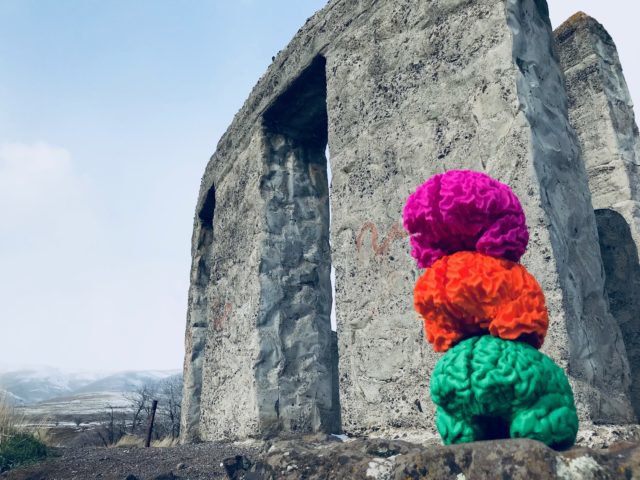

During this season of Brain Awareness, we’ve set ambitious outreach goals, and on a glorious March Tuesday we headed into Yamhill County, home to vineyards, farms, logging roads, the Spirit Mountain casino, college towns, and the headquarters of the Confederated Tribes of the Grande Ronde…
LEARN MORE: Travel Oregon
LEARN MORE: Yamhill County Historical Society
LEARN MORE: More ways to learn about Yamhill County history
We met with principals at two Yamhill County high schools, in Amity and Sheridan, to discuss upcoming fall plans for “Synapses & Stories,” an exploration of Grande Ronde and Siletz Valley tribal stories, the characters that feature prominently in Native tales (including Crow, Grizzly and Coyote), and current brain research related to animal skills and behaviors that were acknowledged long ago…

LEARN MORE: Synapses & Stories: Coyote, Grizzly & their Brains!

We took the opportunity to load our car with cerebrums, and spend time answering insightful questions from students in Joanne Trzcinski’s Health Professions classrooms at both Amity and Sheridan High…
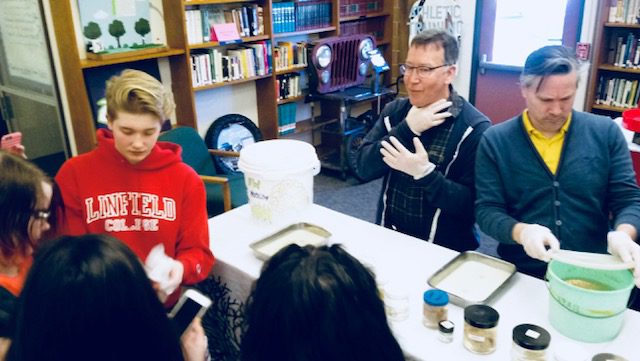
At Amity High School, students aimed to become brain surgeons, heart surgeons, family doctors, biomedical researchers, nurse practitioners and physicians assistants. Their questions included: “How does anesthesia work, during surgery?” “How do concussions damage brains?” and “Why isn’t our cortex smooth, like the rat?”

So how does anesthesia work? Anesthesiologists are among the most well-compensated medical professionals, and they are critically involved in ensuring that your surgical experience is not a viscerally painful or memorable one! They want you to lose consciousness – but what, exactly, is consciousness?

Philosophers have long argued over the precise nature and content of consciousness, often without reference to the brain, but medical professionals grappling with disorders of consciousness like coma, or persistent vegetative state – and anesthesiologists hoping to keep you comfortable during surgery – have naturally pursued a more productive, neurophysiological approach…
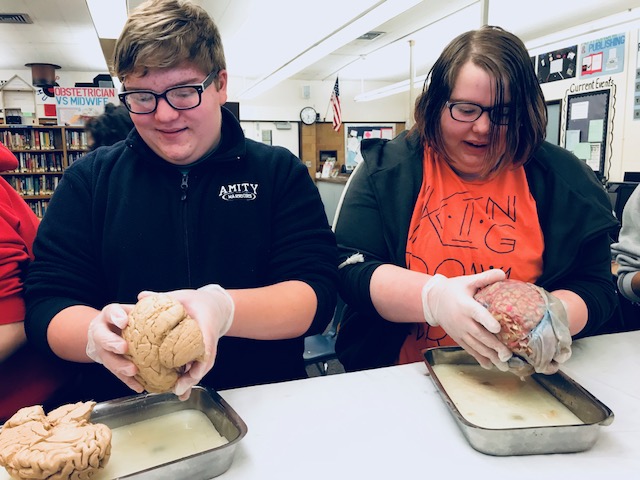
LEARN MORE: Consciousness (From Stanford Encyclopedia of Philosophy)
Consciousness involves both wakefulness (arousal) and awareness of both self and surroundings. These two components are tied to specific brain networks, and damage (from a stroke, trauma, tumor growth) can lead to specific disorders of consciousness…
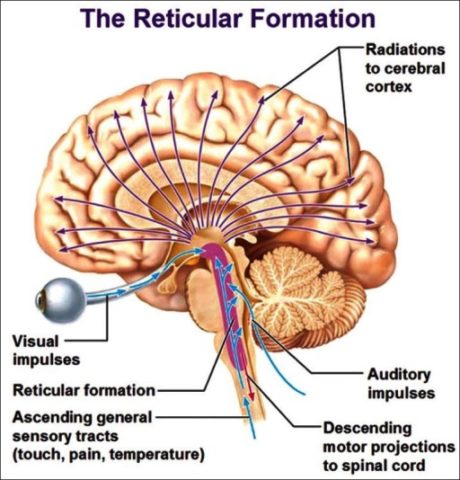
LEARN MORE: Plum & Posner’s Diagnosis of Stupor and Coma (4th Edition)
A coma, for example, involves disruption of a set of brainstem circuits known as the reticular formation. Reticular is Latin for “fan-like,” and brainstem clumps of gray matter called nuclei (neuron cell bodies, along with their dendrites and axon terminals, forming synapses) send many long axons out, fan-like, to connect with and “arouse” many linked areas of cortex…

LEARN MORE: Towards an integrative theory of consciousness
When you are awake, and busy with daily activities, these brainstem nuclei (which release important “modulatory” neurotransmitters like dopamine, serotonin, norepinephrine and acetylcholine) are very active, keeping cortical networks engaged in sharing essential information. When you get drowsy, however, the reticular formation reduces its activity, and when you’re in deep sleep, these nuclei are essentially silent…

If your reticular formation is damaged, you will not wake up, and thus you’ll have have no awareness of self or surroundings. This is a coma. If, however, the damage is restricted to cortical connections, and/or links between the cortex and a set of subcortical (“below the cortex”) nuclei known as the thalamus, distributed networks that are essential for attention, memory, language, decision making and perception will be impaired. You’ll be in a persistent vegetative state (PVS), exhibiting normal circadian patterns of sleep and wakefulness – but lacking awareness of your self and your surroundings…
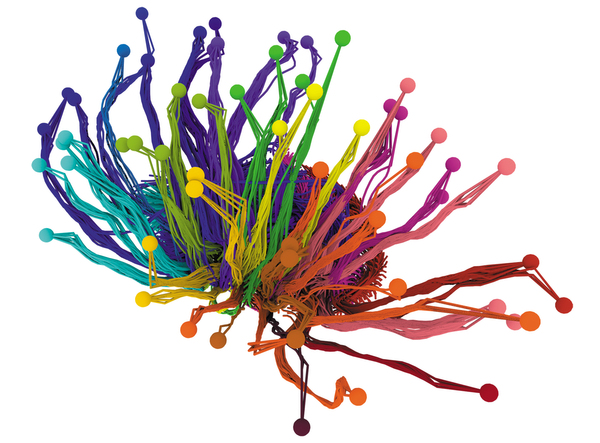
Thalamus (center) shown with axonal links to various cortical regions (circles) in the mouse. Image by the Allen Institute for Brain Science.
More recently, neuroscientists Steven Laureys and Nicholas Schiff have used neuroimaging to identify a new diagnostic category, minimally conscious state (MCS), where patients exhibit normal sleep/wake patterns, and appear vegetative – but show functional network activity indicating awareness! This is important, as minimally conscious patients are present, and are also more likely to recover full consciousness…
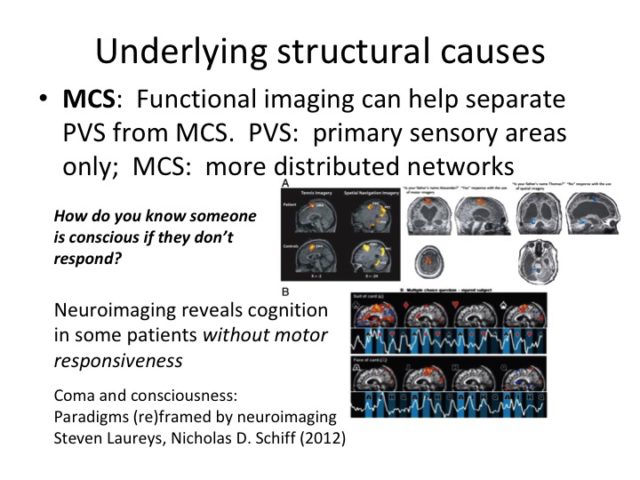
LEARN MORE: Coma and consciousness: Paradigms (re)framed by neuroimaging
LEARN MORE: Brain function in coma, vegetative state, and related disorders
LEARN MORE: Brain death and disorders of consciousness


Anesthesiologists who aim to (temporarily!) impair consciousness administer drugs that quiet neurons, and target the reticular formation, impacting wakefulness. These drugs also disrupt communication in distributed thalamo-cortical networks essential for awareness of our selves and surroundings.
LEARN MORE: What is anesthesia?
LEARN MORE: Anesthesia Fact Sheet
LEARN MORE: How does anesthesia work?
LEARN MORE: Molecular mechanisms of general anesthesia
LEARN MORE: Consciousness and Anesthesia
LEARN MORE: Awareness during anesthesia: how sure can we be that the patient is sleeping indeed?
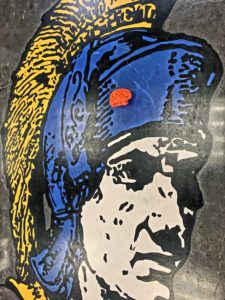
We headed next to Sheridan High School, where students had more questions. “I want to be a neurosurgeon!” “Do antidepressants work?” “Why does coffee help my ADHD?” “Why do tests make some people more anxious than others?” “Where did you get the brains??!”
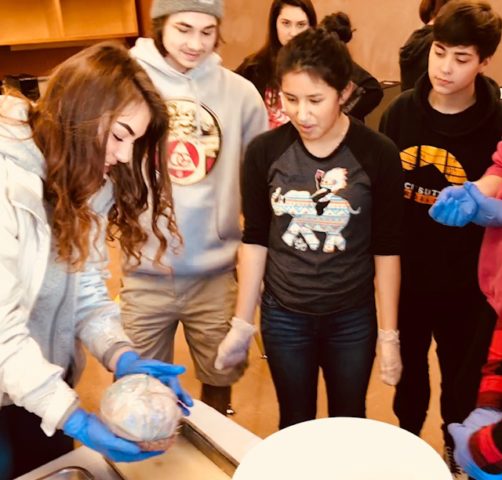
We acknowledged the great variability in genetics and environmental influences on brain development, and discussed current ongoing research at OHSU into structural and functional changes throughout adolescence…
LEAERN MORE: Adolescent Brain Cognitive Development Study
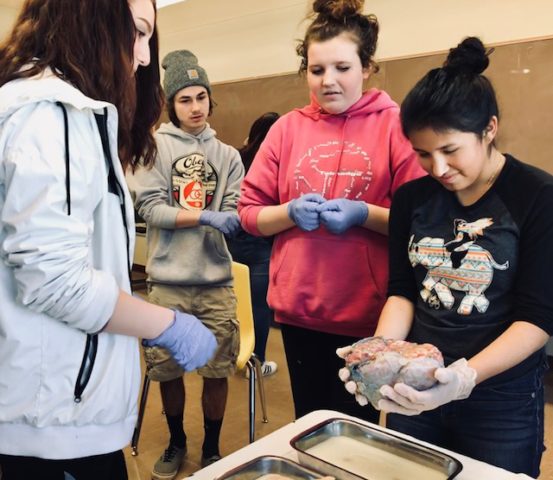
Regarding attention deficit hyperactivity disorder (ADHD), the American Academy of Pediatrics now recommends that doctors and caregivers first determine if a child is getting adequate sleep before prescribing any stimulant medications like Ritalin. Developing networks of cooperating brain regions that let young people direct their attention selectively to the teacher or assigned classroom tasks require alertness and arousal to coordinate their activity and function effectively, and lack of sleep is all too common in our society…
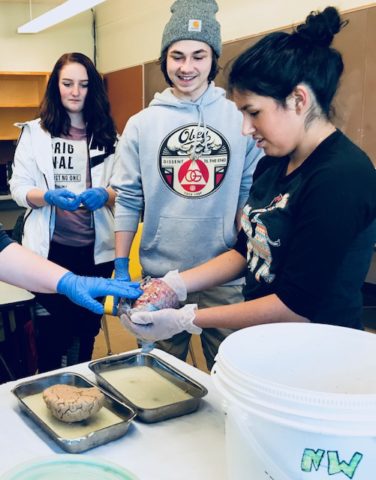
LEARN MORE: Attention Deficit Hyperactivity Disorder (NIH)
LEARN MORE: Noggins in Nod: The science of sleep
Caffeine, greatly beloved in the Pacific Northwest, does help activate that brainstem reticular formation, blocking its ability to detect a circulating chemical signal of exhaustion known as adenosine. This boosts wakefulness, and improves coordination of networks allowing many of us to attend, remember, decide and perceive…

Caffeine is milder (and cheaper) than many prescribed uppers, yet users also develop tolerance to its alerting effects, and can (as many of us know) become dependent. Sleep, along with engaging, intrinsically motivating classroom material and smaller class sizes with fewer distractions may offer longer term improvements.
LEARN MORE: Sleep patterns and the risk for ADHD: a review
LEARN MORE: Associations of sleep disturbance with ADHD: implications for treatment
LEARN MORE: Caffeine (Medline)
LEARN MORE: Coffee: The demon drink?
LEARN MORE: Caffeine: Cognitive and Physical Performance Enhancer or Psychoactive Drug?
LEARN MORE: Astoria Noggins: Tipsy Buzzed Mice @ Street 14
LEARN MORE: Drunk mice on espresso – what could go wrong?

We drove next to Portland’s Cesar Chavez Middle School, to meet with Erica Ronquillo, a Latino Network teacher offering after school enrichment classes in Portland Public Schools. NW Noggin presented a training for Latino Network participants last fall, developed and delivered by many of our Spanish speaking volunteers…
LEARN MORE: Latino Network Learning & Lobes

We enjoyed an energetic afternoon with some very enthusiastic students!
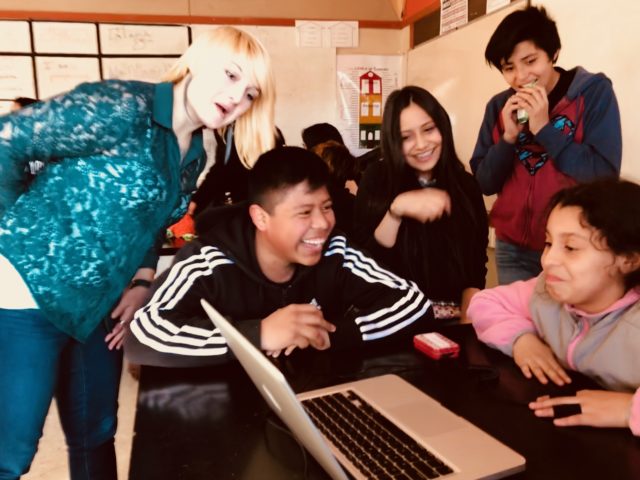
Volunteer Jordan Ray from Portland State University piloted his portable galvanic skin conductance equipment, homemade Altoid tin packed circuitry that recorded and displayed changes in autonomic output on a computer screen…
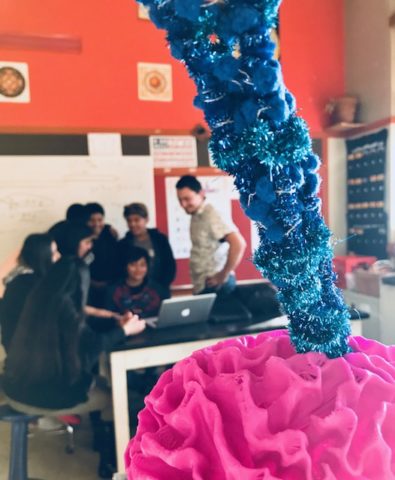
Jordan had tested this out earlier at Fort Vancouver High School, but it was even more accurate, compact and reliable this time at Cesar Chavez!
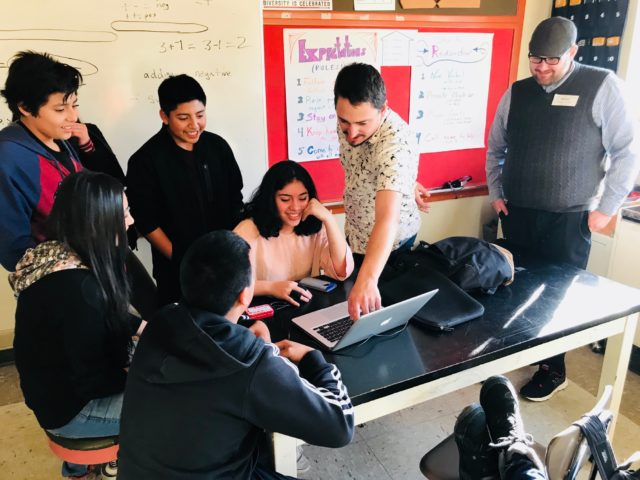

LEARN MORE: Brains, biofeedback & SLEEP @ Fort Vancouver!
We also examined (claro que sí!) los cerebros…

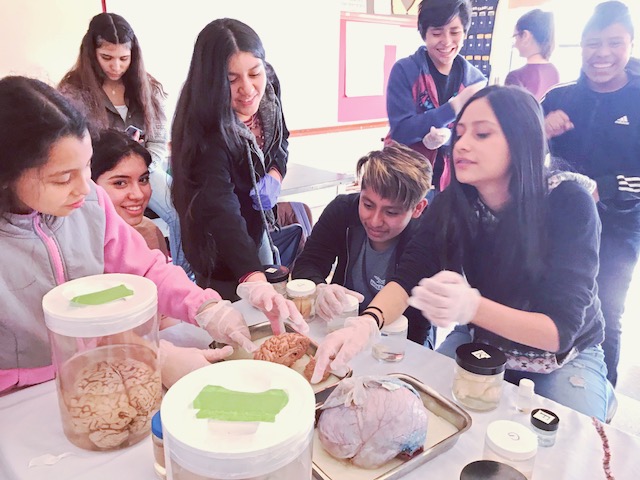
And discussed more topics in neuroscience, including language, drugs, comparative anatomy…

Noggin Resource Council member Sulema Rodriquez discussing research on genetic contributions to stuttering and other speech disorders…
LEARN MORE: Researchers Discover First Genes for Stuttering
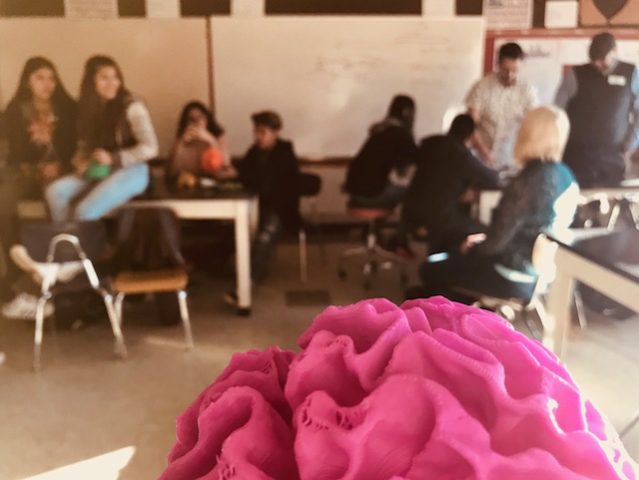
And crafted las neuronas out of pipe cleaners…

LEARN MORE: STEAM Art Projects
A terrific high mileage day of energetic outreach and engagement in the Pacific Northwest. Many thanks to Joanne Trzcinski of the Oregon Pacific Area Health Education Center and Erica Ronquillo of the Latino Network for arranging these events!



